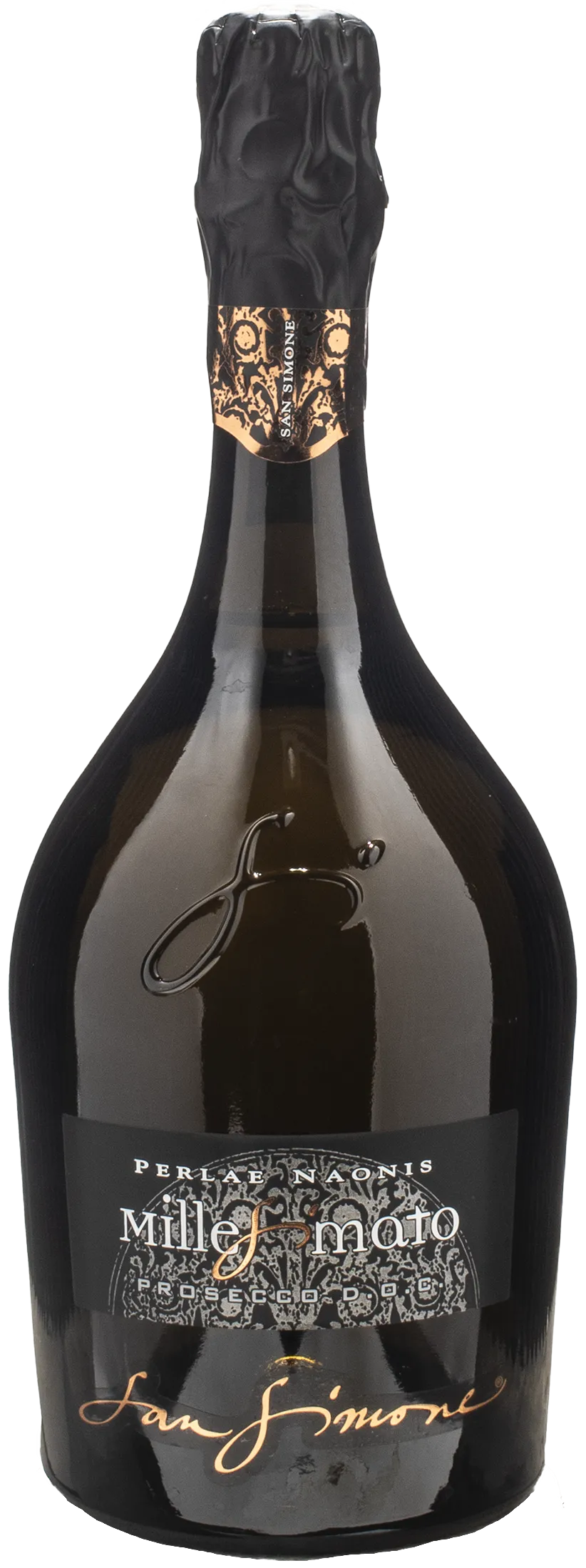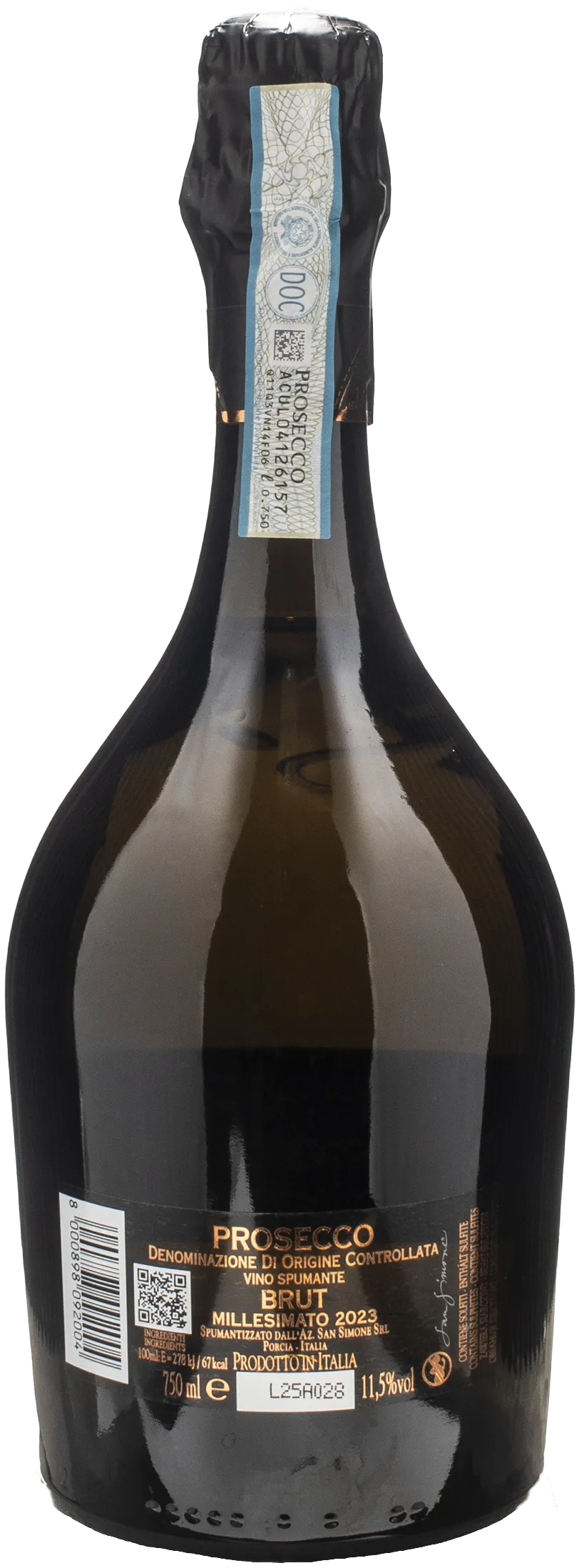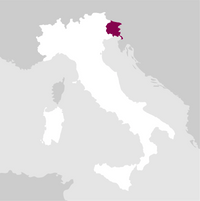Description
This Millesimato was born to celebrate 35 years of Prosecco production and to remember, as witnessed already in Roman times by Plinio, the Friulian origins of the vine: in the municipality of Prosecco, near Trieste, from where it spread further throughout the region Friuli and Veneto.
Awards

Perlage

Perfume

Color

Taste
Serve at:
06 - 08 °C.
Longevity:
03 - 05 years

- Start up year: 1915
- Oenologist: Antonio Brait, Antonio Brisotto
- Bottles produced: 900.000
- Hectares: 85
Later on handed over to our parents, Gino and Liviana convinced that to grow and improve we must always be open to change, which gave birth to a new production project: San Simone. An adventure that started from the historical Brisotto cellars, in Prata and later shifted to the new premises in Porcia, where the company accelerated its pace on the road to quality. This project aims to handle with care even a minimum detail, from the vineyard to the bottle.
At the Concours Mondial Bruxelles, our Prosecco Doc Brut Millesimato Perlae Naonis 2021 was awarded the Gold Medal. Read more


| Name | San Simone Prosecco Millesimato Perlae Naonis Brut 2023 |
|---|---|
| Type | White charmat method sparkling wine brut |
| Denomination | Prosecco DOC |
| Vintage | 2023 |
| Size | 0,75 l |
| Alcohol content | 11.5% by volume |
| Grape varieties | 100% Glera |
| Country | Italy |
| Region | Friuli-Venezia Giulia |
| Vendor | San Simone |
| Origin | Western part of Friuli region, in the center of Prosecco Doc area in the municipalities of Pasiano and Porcia |
| Soil composition | Alluvial soil, calcareous, rich of limestone and clay. |
| Cultivation system | Double Guyot. |
| Plants per hectare | 3500 |
| Yield per hectare | 120 q. |
| Harvest | II-IV week of September. |
| Wine making | Crushing, destemming and gentle pressing, white fermentation for 10 days in stainless steel tanks thermocontrolled (16 8°C), aging in stainless steel vats waiting for the sparkling process. |
| Aging | Re-fermentation in pressurized tanks for about 30 days at controlled temperature (14 6 °C) until reaching 6 bar of pressure; the mass is then cooled to halt the fermentation and kept at a controlled temperature of 8- 10 °C for at least 3 months, to encourage the natural refinement in contact with the yeast deposited at the bottom of the autoclave; at the end of this phase it follows filtration and isobaric bottling. |
| Allergens | Contains sulphites |






